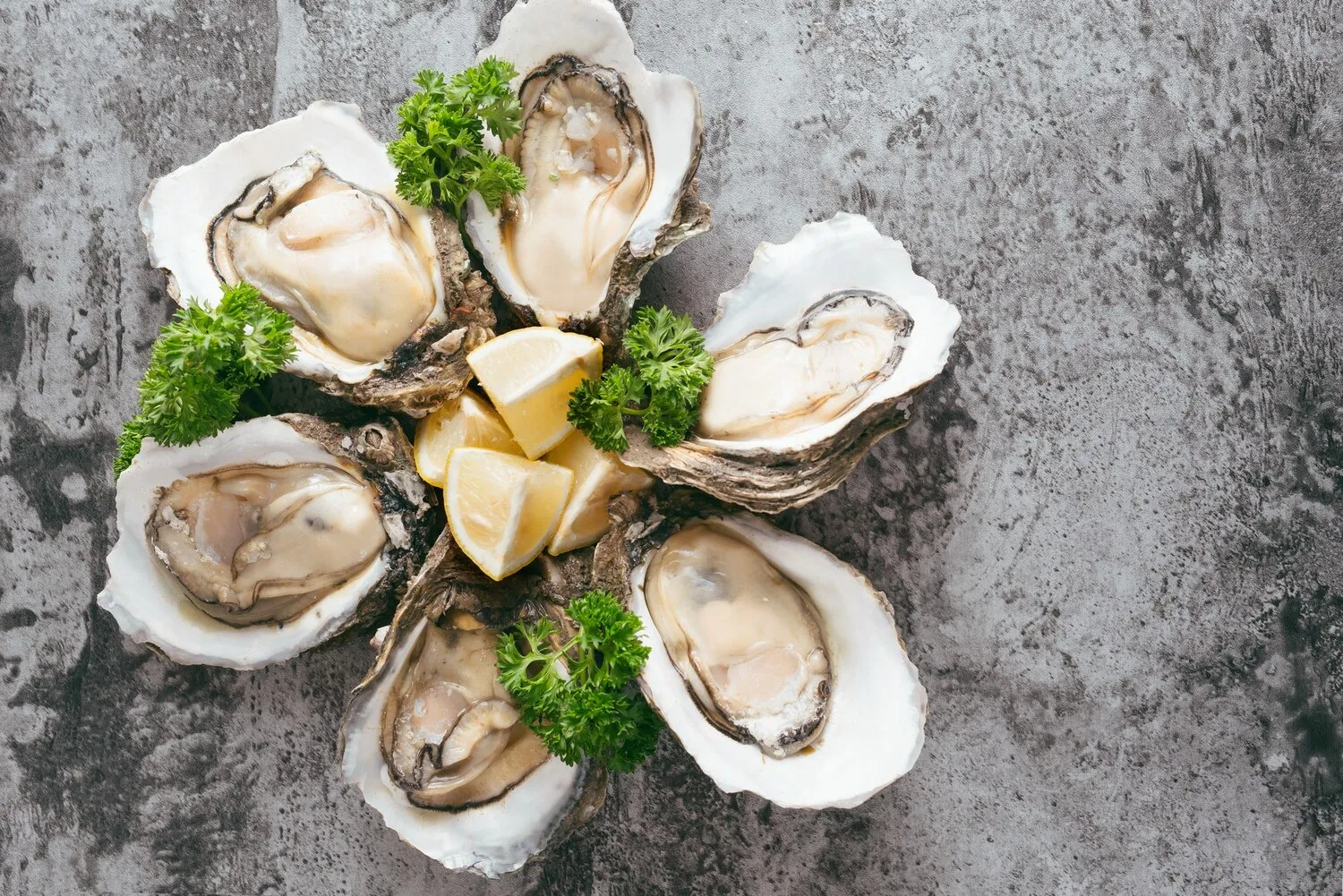
Oysters
Fresh oysters, often served with classic accompaniments like lemon and mignonette.
Nutrition Facts
* The % Daily Value (DV) tells you how much a nutrient in a serving of food contributes to a daily diet. 2,000 calories a day is used for general nutrition advice.
Oysters have been consumed by humans since prehistoric times, with evidence of oyster consumption found in archaeological sites around the world. They were a staple food source for coastal populations and were also considered a delicacy in ancient civilizations like Rome and Greece. Oyster farming dates back to the Roman Empire, demonstrating a long history of human interaction and cultivation of this shellfish.
Oysters hold cultural significance as a symbol of luxury, celebration, and coastal heritage. They are often associated with fine dining and social gatherings, reflecting their historical perception as a delicacy.
Aphrodisiac Associations
Oysters have long been considered an aphrodisiac, a belief that dates back to Roman times. While scientifically debated, this association contributes to their allure and cultural significance.
Coastal Festivals
Many coastal communities celebrate oysters with festivals, showcasing local varieties, cooking techniques, and oyster farming practices. These festivals highlight the importance of oysters to the regional economy and culture.
Luxury and Celebration
Serving oysters is often seen as a luxurious and celebratory act. They are commonly featured at special occasions, such as weddings, anniversaries, and holiday gatherings.
The flavor of fresh oysters is primarily driven by their brininess, complemented by subtle notes of sweetness and minerality. The accompanying sauces like lemon and mignonette enhance these natural flavors.
The primary flavor profile of oysters is the inherent salinity of the seawater they inhabit. This brine is balanced by a subtle sweetness, often described as melon-like or cucumber-like. Different oyster species and growing regions impart unique mineral notes, such as metallic, earthy, or buttery flavors. Lemon juice provides a sharp acidity that cuts through the richness of the oyster, while mignonette, traditionally a mix of minced shallots, cracked black pepper, and vinegar, adds a savory and aromatic complexity.
Freshness is Key
Oysters should be alive when consumed. A closed shell or a shell that closes when tapped indicates a live oyster. Discard any oysters with open shells that do not close upon tapping.
Shucking Technique
Use an oyster knife and protective glove to safely shuck oysters. Insert the knife into the hinge of the oyster, twist to pop it open, and then run the knife along the top shell to detach the oyster. Ensure the oyster is still attached to the bottom shell.
Serving Temperature
Oysters are best served chilled on a bed of ice to maintain their freshness and flavor.
Pairing Suggestions
Oysters pair well with crisp white wines like Sauvignon Blanc, Muscadet, or dry sparkling wines like Champagne or Prosecco. These wines complement the oyster's salinity and delicate flavors.
Explore additional Raw Bar dishes and restaurants
Explore Raw BarDiscover top dining spots and culinary experiences in Göteborg.
Explore GöteborgLearn more about the food culture, restaurant scene, and culinary heritage of Sweden.
Explore Sweden